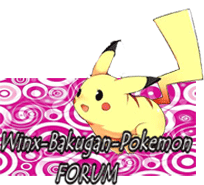When Ken Sugimori first started Game Freak in the early '80s, it was nothing but a video-game fanzine he co-created with his pal Satoshi Tajiri. Now he's the main 2D art director on the Pokemon series, and Tajiri is famous worldwide as the man that not only gave Nintendo a billion-dollar franchise, but almost singlehandedly saved the Game Boy from irrelevancy at one point.
One would think, therefore, that the monster design process for Pokemon Black and White was a regimental, heavily overseen affair. Not so. "There's about 17 people in our design team, and generally what happens is they each draw their own Pokemon and then they get discussed over group meetings," he told Famitsu magazine this week. "We didn't have a very long development cycle with this game, so I had a lot of one-on-one time with each designer."
"There's no particular number that each designer needs to create," added Takao Unno, Pokemon's 3D art director. "But they come up with far, far more designs than actually get included in the game."
Sugimori's main design task for Black and White was Reshiram and Zekrom, the two legendary Pokemon that appear on the box art for each game. "Those were the main ones," he said. "We had previously decided they would be black and white dragons, and that they'd be Fire and Electric type. I wanted to have a pretty stark contrast between the two, so Reshiram was given a light, airy, ladylike design while Zekrom has a much tougher and manly look. The tails on both Pokemon are the central points of their respective designs -- they're based off of those electric turbines you see, and they give the impression that they're these great big generators of fire or electric energy."
The designs for the three starter Pokemon in Black and White, meanwhile, were handled by younger staff at Game Freak. Pokabu, the Fire-type pig shown above, was conceived by Korean graphic designer Lee Hyun-Jung, who's mostly handled art for the Pokemon Trading Card Game up to now. "The original idea with Pokabu was to have a Pokemon that figuratively looked 'cute enough to eat' at the start, but would eventually evolve to the point where it'd wind up eating you instead," Lee told Famitsu. "Also, I read somewhere once that pigs wallow in mud because otherwise they have trouble regulating their body temperature, so I thought it'd be amusing if it shot fire out of its snout to do that instead."
A lot of thought goes into the starter Pokemon and their respective roles, as you'd expect. "Out of the first three Pokemon, we eventually decided that Tsutaja [the Grass type] would be the 'cool' one and Mijumaru [the Water type] would be the 'cute' one," Lee said. "Pokabu wound up being more of the 'sidekick' sort -- clumsy but lovable. He gradually evolves and matures into something a lot more reliable as you play, so it makes the effort to raise him seem pretty worth it, I think."
As for Mijumaru and his evolutions, designer Yusuke Ohmura decided to make him the 'den mother' figure looking over the other two starters. "Janobii and Chaoboo [Tsutaja and Pokabu's first evolutions, respectively] were already done up by the time I worked on Mijumaru's evolutions, so I envisioned something that could get in between those two and stop them whenever they got in a fight," he said. "For Daikenki [Mijumaru's final evolution], I decided that a full-on change in shape would be the best. I caught a trained-seal show at the Sunshine International Aquarium in Ikebukuro around that time, and it really impressed me how strong those seals were -- they just seemed so powerful, especially the sound they made when they stamped on the ground. I worked that into the design, and Daikenki was the result."
When asked what the hardest part of Black/White development was, Unno and Sugimori being up the sheer amount of work animating each Pokemon proved to be. "A lot of people think that our graphic designers do nothing but the basic Pokemon portraits," Unno said, "but they're also responsible for the in-game pixel art and 3D sequences. Since we have the Pokemon constantly moving during battle, we had to decide how each one would act when executing this or that move, or what they should look like when they were put to sleep or whatever. It was a lot more work than I ever imagined it'd be."
"Since you can bring in your old Pokemon after finishing the story, we also had to add new animation to all of the Pokemon in the book," Sugimori added. "It was just a massive quantity of work, and I really respect everyone on the team for plowing through it."
Source










No comments:
Post a Comment